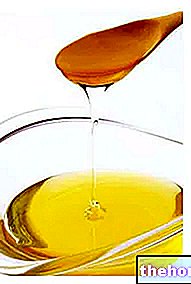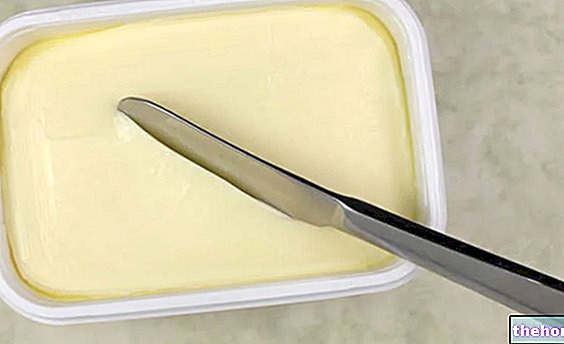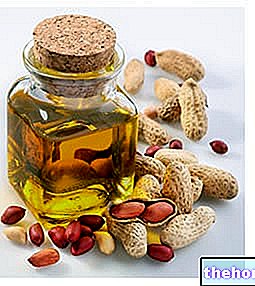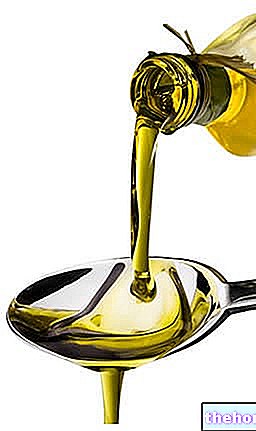Generality
Tartar sauce is a food based on egg yolks, oil, vinegar, fresh vegetables - preserved, and spices; it is a typical French preparation that brilliantly replaces seasoning fats.

The energy intake of Tartar sauce is high and its nutrients do not allow a high consumption; it is almost unequivocally precluded by low-calorie diets or against metabolic diseases.
Etymology
The Tartar sauce was born as an accompaniment to the homonymous preparation based on raw meat suitably "diced" with a knife (Tartar in Italian or Tartare in French). The name of the dish and of the sauce refers to the habit that certain barbarians had of consuming meat, that is raw but heated and aged between the horse's back and the driver's buttocks.
Description and hints of composition
The Tartar sauce is light in color, tending to yellow, with numerous fragments of green, white and yellow vegetables. The consistency is creamy, while the aroma is pleasantly sour and of raw egg.
Tartar sauce is a well-known and widespread food; there are numerous variations but the basic ingredients are always: mayonnaise, vinegar, fermented gherkins, capers, white onion and / or chives.
For more information on the weights and the procedure necessary to obtain a good Tartar sauce, I recommend visiting the Tartar Sauce web page; at the same address it will be possible to consult in more detail the nutritional content of the food (energy, energy nutrients, cholesterol and fiber).
Tartar Sauce - Video Recipe
Problems with playing the video? Reload the video from youtube.
- Go to the Video Page
- Go to the Video Recipes Section
- Watch the video on youtube
Nutritional aspects
As anticipated, the Tartar is to be considered as a condiment fat.
Having a mayonnaise base, it contains high percentages of oil and egg yolk, which give it a very high concentration of energy lipids (therefore calories), vitamin E, essential fatty acids, cholesterol, carotenoids, some B vitamins and iron. Obviously, the vegetables contained in it increase the fraction of simple sugars and fibers, but they are certainly not the characteristic nutrients of the preparation; proteins are of high biological value.
The chemical composition of Tartar can vary a lot depending on the type of oil used, as some have excellent quantities of omega 6 (e.g. corn) or omega 9 (e.g. extra virgin olive oil) or omega 3 (e.g. . of soy); the choice is also based on the destination of the sauce itself.
From what has been described, even without going into further detail, it is conceivable that the Tartar sauce does NOT represent a food to be consumed in freedom. The energy abundance does not easily place it in the ordinary diet and especially in that aimed at slimming; at the same time, despite having excellent concentrations of polyunsaturated fatty acids and antioxidants (vitamins A, E), Tartar sauce abounds in cholesterol, therefore it must be excluded from the diet of those suffering from hypercholesterolemia The average portion of tartar sauce is about 10g, in case it completely replaces the seasoning fats it can reach 20-30g.
Other Foods - Oils and Fats Peanut Butter Cocoa Butter Butter Greaves Wheat Germ Animal Fats Margarine Vegetable Cream Tropical Oils and Fats Frying Oils Vegetable Oils Peanut Oil Borage Oil Rapeseed Oil Krill Oil Poppy Seed Oil Seed Oil Pumpkin Avocado oil Hemp oil Safflower oil Coconut oil Cod liver oil Wheat germ oil Linseed oil Macadamia oil Corn oil Almond oil Hazelnut oil Walnut oil Olive oil Palm oil fish Rapeseed oil Rice oil Pomace oil Seed oil Soybean oil Grapeseed oil Extra virgin olive oil Sesame seeds and sesame oil Lard OTHER ARTICLES OILS AND FATS Categories Food Alcoholics Meat Cereals and derivatives Sweeteners Sweets Offal Fruit Dried fruit Milk and Derivatives Legumes Oils and Fats Fish and fishery products Salami Spices Vegetables Health recipes Appetizers Bread, Pizza and Brioche First courses Seconds pi acts Vegetables and Salads Sweets and Desserts Ice creams and sorbets Syrups, liqueurs and grappa Basic Preparations ---- In the Kitchen with leftovers Carnival recipes Christmas recipes Light diet recipes for Celiacs Recipes for Diabetics Recipes for Holidays Recipes for Valentine's Day Recipes for Vegetarians Protein Recipes Regional Recipes Vegan Recipes




























